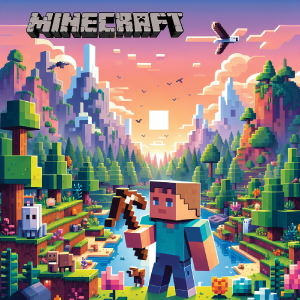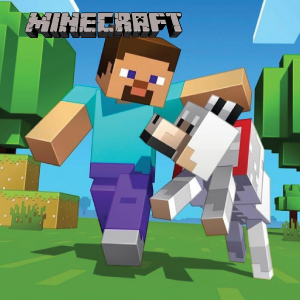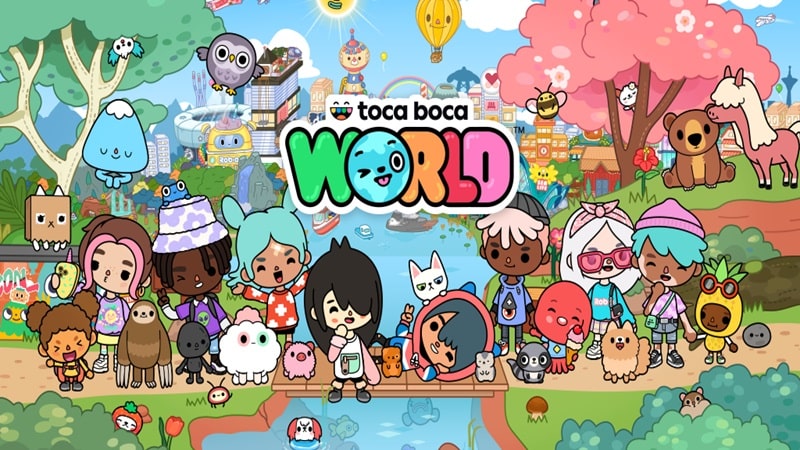Popular Now
Minecraft isn’t just a game—it’s a digital sandbox that has captured the imagination of millions. Whether you’re crafting your first wooden pickaxe or engineering massive Redstone machines, the game offers limitless potential. In this comprehensive guide, you’ll discover essential Minecraft tips & guides covering everything from survival basics to advanced strategies. No matter your experience level, there’s always more to explore and improve.

1. Getting Started in Minecraft: A Beginner’s Guide
When you first spawn in a new Minecraft world, the environment can feel overwhelming. Trees, hills, caves, and creatures surround you—but where do you begin?
Start by gathering wood from nearby trees. Use that wood to craft basic tools like a wooden pickaxe and a crafting table. Your first day should be spent collecting essential materials: wood, coal (or charcoal), and food. As night falls, monsters emerge. Build a simple shelter to protect yourself.
The first few days in Minecraft are all about survival and resource gathering. As you explore, make sure to collect wool from sheep to craft a bed—this allows you to skip the dangerous nighttime.
2. Crafting Tools and Weapons
Once you have basic materials, the next step is crafting tools that make your gameplay efficient. Start with wooden tools, then quickly move on to stone by mining cobblestone.
Each tool has specific uses:
-
Pickaxes are for mining.
-
Axes help cut wood faster.
-
Shovels dig dirt, gravel, and sand.
-
Swords and bows are for defense.
Upgrade your tools to iron and then to diamond or netherite as you progress. Crafting advanced weapons and armor gives you better protection and combat ability, especially when facing mobs like skeletons or creepers.
Tool Durability Tips
-
Always carry spare tools.
-
Combine damaged tools in a crafting grid to save resources.
-
Enchant tools later for longer use.
3. Exploring the World Safely
Exploration is the heart of Minecraft gameplay. As you venture out, you’ll discover mountains, deserts, jungles, and oceans—each biome offers unique resources.
Prepare for exploration by packing essentials: food, torches, tools, and a weapon. It's also smart to carry a bed and a compass. If you get lost, a compass can guide you back to your spawn point.
Pro Tip: Always mark your trail with torches or blocks. This makes it easier to return home.
Managing Hunger and Health
-
Eat cooked meat, bread, or stews to restore hunger.
-
Avoid fall damage and mob fights when you're low on health.
-
Golden apples can be life-savers in emergencies.

4. Building and Base Design Tips
Your home base is your sanctuary in Minecraft. It’s where you store items, sleep, craft, and plan adventures. Start with a simple structure and improve it over time.
Use stone, wood, or bricks to build a strong and safe base. Add lighting with torches or glowstone to keep hostile mobs away. Consider building fences or walls to further protect your base.
Essential Rooms for Your Base
-
Crafting area: crafting table, furnaces, storage chests.
-
Farming section: grow wheat, carrots, potatoes.
-
Bedroom: set your spawn point with a bed.
-
Mine access: dig directly from your base to gather ores.
Designing an efficient and safe base will save you time and reduce risks as you progress.
5. Mining and Resource Management
Mining is a key part of Minecraft tips & guides because it's how you gather valuable resources like iron, diamond, and redstone. The deeper you mine, the better the materials you’ll find.
Start a staircase or vertical shaft down to Y-level -59 (for diamond). Use the branch mining technique: dig a main hallway with side tunnels every 2 blocks. This is both safe and efficient.
Valuable Ores and Where to Find Them
-
Coal: found in almost any elevation.
-
Iron: Y-level 15–54.
-
Diamond: Y-level -59.
-
Redstone: Y-level -59.
-
Gold: found in badlands and deep caves.
Always bring torches, food, and multiple pickaxes when mining. Watch out for lava pools!
6. Farming and Food Production
Food is essential to surviving and thriving in Minecraft. Once you have a base, setting up a farm should be a priority. Farming provides a renewable food source and reduces your reliance on hunting animals.
Start by planting seeds (wheat, carrots, potatoes) near water. Use a hoe to till the soil, then plant and harvest crops regularly. You can also raise animals like cows, pigs, and chickens.
Automating Farming
Use Redstone to create automatic farms. With dispensers, water streams, and observers, you can build systems that harvest crops for you.
Efficient farming ensures survival and makes it easier to venture further from your base without worrying about food.
7. Enchanting and Brewing Potions
As your skills advance, enchanting tools and brewing potions become essential. Enchanting gives your weapons and armor magical effects, while potions can provide boosts or healing.
To enchant, you need:
-
Enchanting table
-
Lapis lazuli
-
Experience levels
Surround your enchanting table with bookshelves to increase the enchantment level. Combine enchantments using an anvil.
Key Enchantments
-
Sharpness (sword)
-
Efficiency (pickaxe)
-
Protection (armor)
-
Unbreaking and Mending (any gear)
Potions require a brewing stand, blaze powder, and bottles of water. Use nether wart to start most potion recipes.
Helpful Potions:
-
Healing
-
Fire Resistance
-
Strength
-
Night Vision
Mastering these systems greatly enhances your performance in combat and exploration.
8. The Nether and The End: Dimensions of Danger
The Nether and The End are alternate dimensions in Minecraft, full of unique mobs and materials. They're essential for completing the game and crafting powerful items.
The Nether
Build a portal using obsidian and flint & steel. Inside the Nether, you'll find:
-
Blaze rods (for potion brewing)
-
Nether wart
-
Quartz and gold
-
Piglins and Ghasts
Tips for surviving in the Nether:
-
Bring fire-resistant potions
-
Use gold armor to avoid Piglin attacks
-
Never dig straight down—lava flows fast















